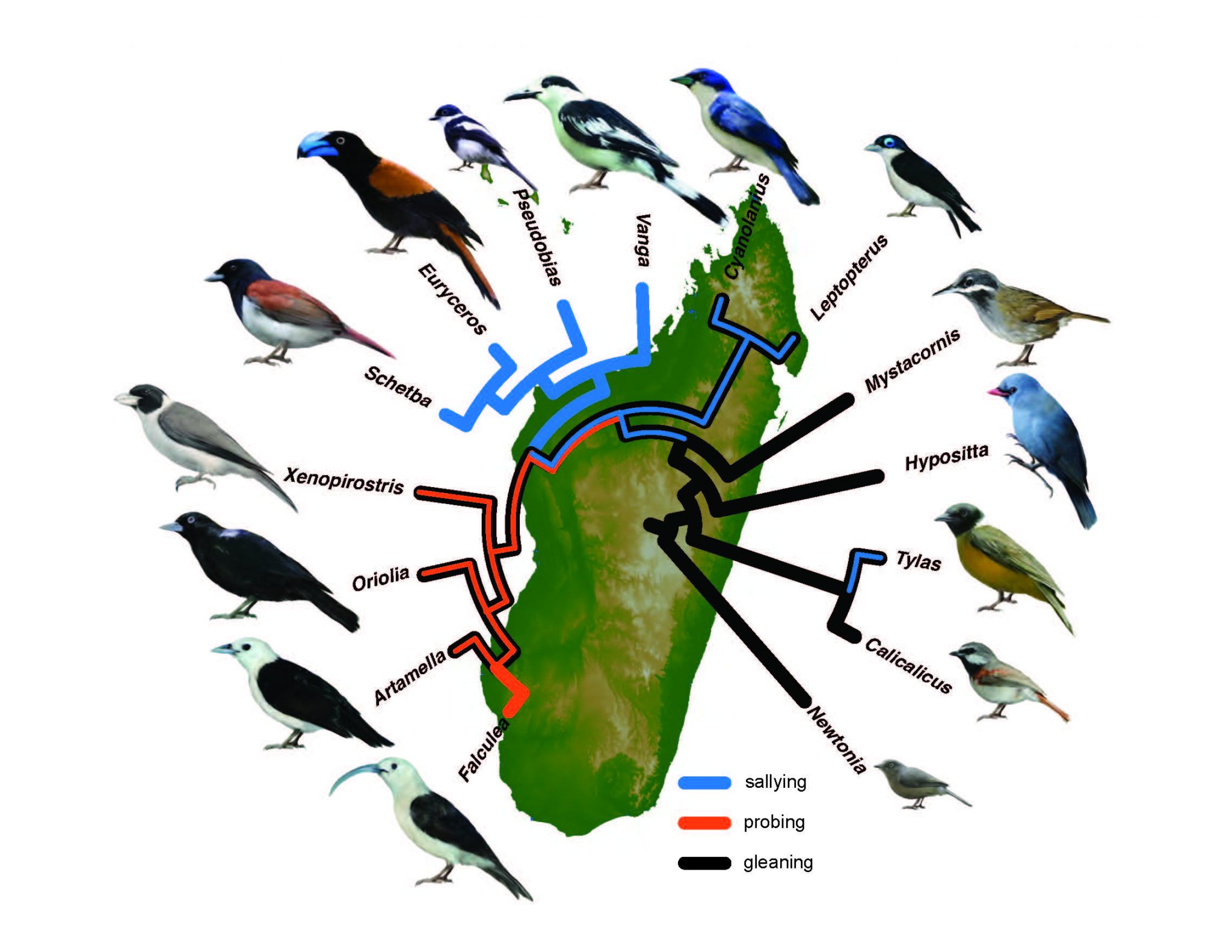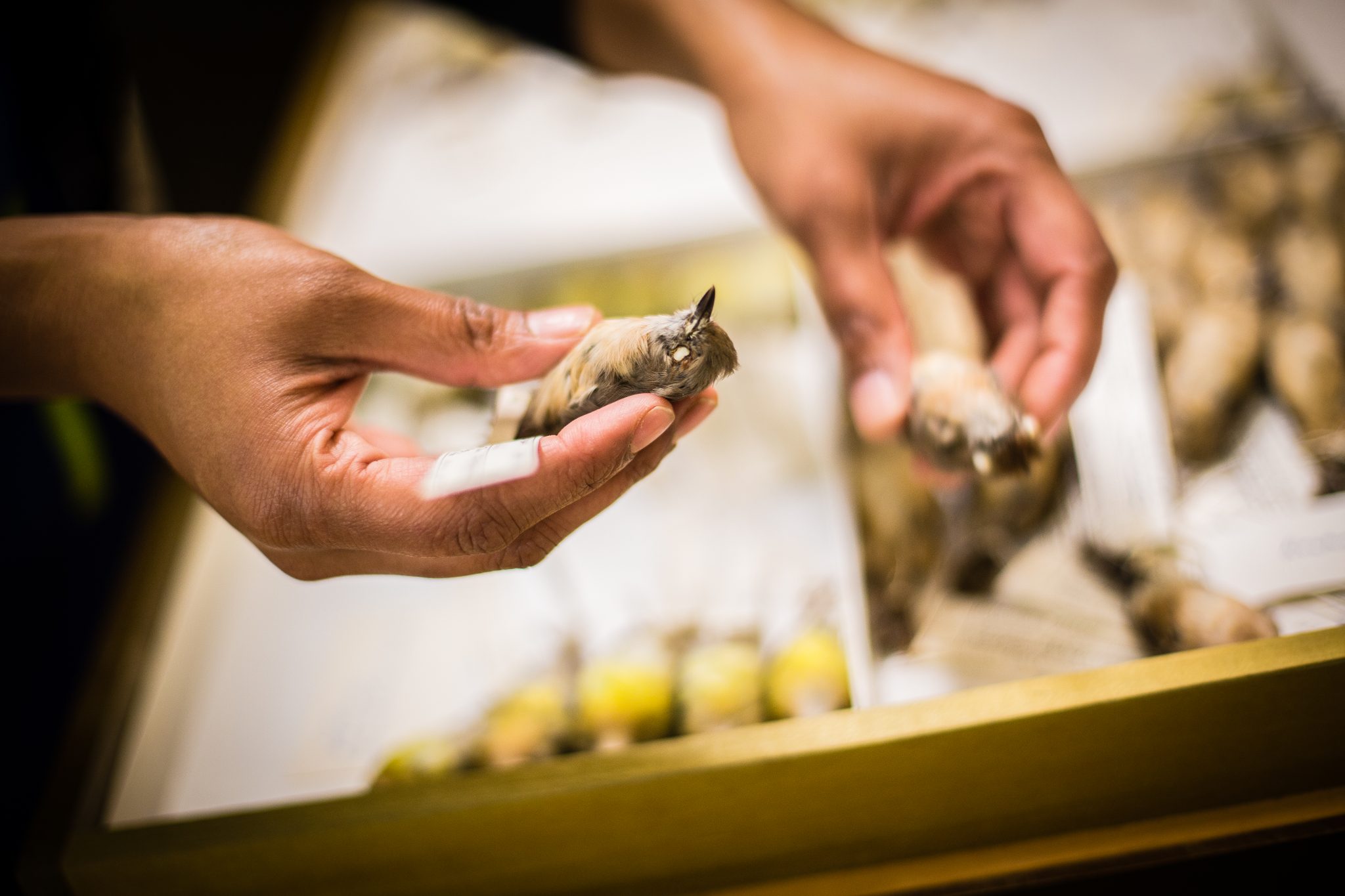
Welcome Dr. Sushma Reddy
Breckenridge Chair of Ornithology
Published07/09/2018
Dr. Sushma Reddy will join the University of Minnesota this fall as the Bell Museum’s new Breckenridge Chair of Ornithology, overseeing the museum’s vast collection of over 46,000 bird specimens as well as a research program to further develop understanding of the avian tree of life. She will hold an assistant professorship in the Fisheries, Wildlife, and Conservation Biology department (FWCB) in the College of Food, Agricultural and Natural Resource Sciences.
Established in 1986, the endowed chair honors the life and work of Walter J. Breckenridge— naturalist, scientist, diorama maker, filmmaker, educator, conservationist, artist, and director of the Bell Museum from 1946-1970. The chair supports the work of exceptional faculty in the field of evolutionary biology, which contributes to the Bell Museum and the larger field of wildlife conservation.
From Madagascar to Minnesota
Dr. Reddy is a distinguished researcher whose work is global in both scope and reach. She has been an associate professor at Loyola University Chicago and research associate at the Field Museum of Natural History since 2009. She received her Ph.D. from Columbia University, and her doctoral research on the evolution and biogeography of birds in southern Asia was conducted mainly at the American Museum of Natural History.
“Dr. Reddy’s research in Asia fills a critical gap in our understanding of global bird diversity,” said Susan Galatowitsch, professor and FWCB department head. “Her work builds on Minnesota’s rich legacy of ornithology, which extends back nearly a century to early Bell Museum director T.S. Roberts. We are thrilled to have her join the FWCB faculty, which includes a great group of avian ecologists and conservation biologists.”
New Bell Museum, New Start
Reddy joins the Bell Museum as it prepares to open a new, state‐of‐the‐art facility July 13-15, 2018, with improved exhibits, a versatile 120‐seat digital planetarium, and expanded educational areas on the university’s St. Paul campus.
“I am thrilled to be part of the Bell Museum during this exciting time in its history—it’s a literal fresh start for both the Bell and me,” said Reddy. “The new building gave me chills the first time I walked in. I consider myself a museum nerd so I definitely can feel that this new Bell will take its rightful place among other world-class cultural institutions.”
The Bell’s bird collection currently holds around 46,000 specimens, and collections are at the core of Reddy’s research program. Her experience includes collections and curation activities at both The Field Museum and the American Museum of Natural History.
Through her role as a Bell Museum curator, Reddy will dedicate a portion of her time to public outreach and showcasing the value of natural history collections for scientists today and into the future. This is a task she is more than prepared for as she has utilized natural history collections to collaborate with researchers around the world and train dozens of students.
Denise Young, Bell Museum executive director, is proud to welcome Dr. Reddy to the museum. “Walter Breckenridge was a researcher with a keen understanding of the importance of engaging the public in understanding and appreciating the natural world. Dr. Reddy’s career has shown clear commitment to the communities where she works – this makes her an excellent choice for the Breckenridge Chair. We are thrilled she is joining the Bell.”
Current Projects
Madagascar
Investigating the evolutionary history of the many unique birds found only on this island. Using genomic (DNA) data to understand bird family trees, Reddy will study how these species have evolved differences in features such as plumage color, bill shape, and habitat needs. Some lineages, such as the Malagasy vangas, are quite dramatic examples of evolution and are considered adaptive radiations, like Darwin’s Finches.
India
Reddy spent a 5-month sabbatical at the National Center for Biological Sciences (NCBS) in Bangalore, India in 2013. She has served as a visiting professor ever since, returning 1-2 times per year and collaborating with the faculty, postdocs, and students on various projects related to Indian biodiversity.
“This is an area where we know little about the evolutionary history of the birds, and genetic data is really changing our views of the region,” said Reddy.
This summer, Reddy will make a reconnaissance visit to a NCBS field station in the Satpura Range in the center of the Indian Peninsula with the hopes of establishing a long term project that may develop into a study abroad site for UMN students.
Avian Tree of Life
There are many distinctive groups of birds and figuring out how these different lineages are related to each other—or how they evolved to be so different—is a question that has long baffled biologists. Reddy continues to work on these questions by examining how aspects of genomic evolution in birds might influence our results of the bird family tree.
Reddy was part of the first study able to conclusively resolve many of the branches of the bird tree of life. Before this, scientists knew little about how major bird groups were related. The study uncovered “many strange but exciting results” as Reddy puts it, such as songbirds are closely related to parrots, which offers some clues to the evolution of vocal learning in birds or that despite being ecologically similar, hawks and falcons are not closely related, while hummingbirds (colorful daytime birds) and nightjars (drab nocturnal birds) are closely related.
About Fisheries, Wildlife and Conservation Biology
Since its inception in 1982 the Department of Fisheries, Wildlife and Conservation Biology has been at the forefront of advancing knowledge about the conservation of biodiversity at scales ranging from genomes to landscapes, aquatic and terrestrial. FWCB contributes to the management, protection, and sustainable use of fisheries and wildlife resources through teaching, research, and outreach. FWCB is one of 12 academic departments in the College of Food, Agricultural and Natural Resource Sciences.




